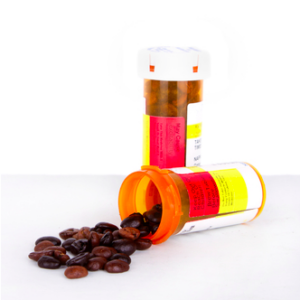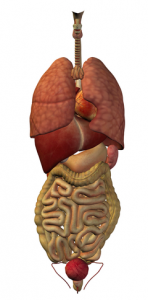The Glycemic Index: Useful or Useless?
Popularized in the mainstream media & bodybuilding world, how does the G.I of a food actually apply when seeking physique ...

Popularized in the mainstream media & bodybuilding world, how does the G.I of a food actually apply when seeking physique ...
It is true that a person’s caloric intake has a very direct impact on their weight. Consume more than is ...
Building and maintaining muscle mass while concurrently stripping body fat to reveal the separation and conditioning which defines the elite-level ...
Of the major neurotransmitters, acetylcholine just might be the most important from a muscle building standpoint. As a major neurotransmitter ...
Could the numerous benefits of this often overlooked amino contain the key to unlocking your gains? From growth hormone stimulation ...
In the quest for the perfect physique, hormones often take center stage. Testosterone, estrogen, cortisol, insulin…they get all the glory ...
If you’re looking for a good recipe for fat storage, high insulin and high fat in the blood is the ...
Not all fats are created equal. Put simply, there are good fats and bad fats: the so called unsaturated and ...
Is marketing B.S & deceptive food labelling costing you your health & slamming the breaks on your progress? We give ...
A new year has begun and now is the time to carve off that holiday excess. As fans of this ...
You have also likely heard of ‘HMB’ which is a derivative of leucine. In fact the above pathway requires that ...
In today’s society, emphasis is placed on work and productivity over anything else. This could mean sacrificing quality of nutrition ...
 Bodybuilders and other fitness-minded folk are for the most part considered to be a healthy bunch. Well balanced nutrition, regular exercise, sound sleeping habits and a stress-free lifestyle designed to enhance health and athletic performance are hallmarks of those who have invested heavily in their personal health and wellbeing. A great many of these people are also addicted to a powerfully psychoactive, potentially toxic recreational drug; previously banned by sporting organizations, this substance may, if consumed in excess, compromise the very health we are trying to preserve. This same compound, craved and consumed by many in large amounts, is also used as a potent pre-workout energizer and is valued for its role in significantly improving mental alertness, boosting human productivity, and enhancing physical and cognitive performance. It is found in your morning coffee, an ever-increasing array of energy drinks, teas and chocolate. You may have heard of it: caffeine – the world’s most popular drug!
Bodybuilders and other fitness-minded folk are for the most part considered to be a healthy bunch. Well balanced nutrition, regular exercise, sound sleeping habits and a stress-free lifestyle designed to enhance health and athletic performance are hallmarks of those who have invested heavily in their personal health and wellbeing. A great many of these people are also addicted to a powerfully psychoactive, potentially toxic recreational drug; previously banned by sporting organizations, this substance may, if consumed in excess, compromise the very health we are trying to preserve. This same compound, craved and consumed by many in large amounts, is also used as a potent pre-workout energizer and is valued for its role in significantly improving mental alertness, boosting human productivity, and enhancing physical and cognitive performance. It is found in your morning coffee, an ever-increasing array of energy drinks, teas and chocolate. You may have heard of it: caffeine – the world’s most popular drug!
Approximately 75 percent of Americans regularly consume caffeine through the intake of coffee; many non-coffee drinkers frequently dose up on this potent central nervous system (CNS) stimulant via various pre-workout formulations and energy drinks. Scientifically referred to as a trimethylxanthine (a xanthine alkaloid), caffeine’s popularity can be attributed to the many energizing and stimulating effects it has on the brain. Pure caffeine, in its isolated form, is a bitter-tasting, white, crystalline powder; it is extracted from plants such as guarana berries, kola nuts, cacao, and yerba mate. Aside from its performance enhancing benefits (1, 4, 5), caffeine is used medically to stimulate cardiac function and as a mild diuretic. It is, however, primarily used by many (this author included) to heighten mental acuity, boost productivity, and enhance performance.
From its origins in Arabia to its modern use around the globe, much lively discussion has been sparked by the infusion of copious amount of java. However, caffeine consumption also has its downsides. Depending on one’s tolerance and current state of health, as little as 250mg per day (about 2 strong cups of coffee) may promote unwanted side effects for some, while others may remain unscathed on a regular schedule of 500mg+ per day. So let’s discuss caffeine’s coveted performance benefits while also uncovering the potential downsides of regular consumption.
How does caffeine work?
Upon consumption, caffeine is rapidly absorbed from the stomach and small intestine and peak blood levels are reached within ~30 minutes. Once in the blood, caffeine’s stimulatory effects on the brain are the first to be noted. Along with increased mental arousal, are blood pressure, pulse rate and stomach acid. Shortly after ingestion, caffeine induced fatty acids are released into the bloodstream. Further effects of caffeine include increased heart rate with a resultant increase in blood flow to working muscles, and decreased blood flow to the skin and inner organs. These effects generally last 2-3 hours but can persist for up to 12 hours, and they do become less apparent the greater one’s tolerance level to caffeine becomes. Regular users may not, for example, observe any perceptible blood pressure or pulse rate increases, but all users will experience a degree of neurological stimulation.
Caffeine exerts its stimulant properties by activating the sympathetic branch of the central nervous system (4). This effect is due to the interaction between caffeine and adenosine, a purine nucleotide which plays an important role in many biochemical processes including energy transfer, arousal, and the regulation of sleep and wakefulness. When caffeine (structurally very similar to adenosine) binds to the adenosine receptor, an effect called competitive inhibition occurs, which in turn suppresses the effects of adenosine. It is the intracellular buildup of adenosine which occurs throughout the day that leads to the feelings of sleepiness we get at night. Whenever caffeine attaches to adenosine receptors, it suppresses the cellular build-up of adenosine, thus down-regulating this molecule’s sedating effects. By halting one of the main processes by which the CNS is suppressed, caffeine produces its much sought-after stimulatory effects. This adenosine receptor inhibition leads to a cascade of events involving hormones, peptides, and neurotransmitters such as dopamine, norepinephrine, and cAMP that lead to the performance enhancing and lipolytic effects of caffeine.
Caffeine’s Uses:

1. Boosts physical performance
Although there will always be a degree of individual variability concerning caffeine’s effects, its actions, when taken to boost physical performance, are unequivocally positive. For example, while on caffeine (300mg or more prior to an event), endurance athletes may shave valuable seconds off their race times. Indeed, due to caffeine consumption, oxygen uptake and energy expenditure both are increased without any increase in perceived ratings of exertion (4). Aside from the obvious performance benefits, the ability to work harder while minimizing exhaustion is motivating for those who find physical activity daunting. Thus caffeine may also inspire a pattern of regular exercise in those unaccustomed to physical activity. As an ergogenic substance, caffeine also increases energy levels, reaction time, and alertness; in addition, caffeine has been shown to improve muscular and cardiovascular endurance (15).
Fatty acids are released from muscle tissue whenever caffeine is consumed (8). This availability of free fatty acids increases endurance and spares muscle-glycogen. This allows the athlete to work for longer due to a surplus of fatty acid stores from which greater amounts of energy can be derived. Glycogen sparing is thought to occur in the first 15 minutes of exercise, at which time caffeine has been shown to decrease glycogen utilization by as much as 50 percent. Events in which consumers are most likely to benefit from caffeine intake are those of a longer duration (40 minutes or more), and which require a moderate intensity (like long distance running, or steady-state cardiovascular training) (8, 15).
Because caffeine stimulates the CNS, it enables us to become more attuned to our surroundings while improving our ability to respond. For the athlete, this means increased reaction times, faster muscle movement, and sharpened situational awareness. In addition, heart rate efficiency is improved along with oxygen and nutrient flow to the brain. To produce such performance benefits, two cups of strong coffee or 200-300 mgs of caffeine from another source may be consumed.
2. Improves mental arousal, alertness, and wellbeing 
Aside from the stimulatory effects, many people consume products containing caffeine to improve their mood and enhance their sense of emotional wellbeing. The social lubricant properties of caffeine are no coincidence. Many would balk at the suggestion of no coffee at social occasions or meetings, reason being that caffeine not only stimulates but invigorates and, ironically, may promote a state of calm. Such attractive properties could be traced to an accumulation of the feel-good neurotransmitter dopamine brought about by the intake of caffeine (14). As well as playing a critical role in emotional wellbeing and mental health, dopamine is also associated with motor control, cognition, motivation, and desire. In fact, the most popular of caffeine’s ergogenic effects include its ability to improve mental acuity and cognitive functioning. By taking as little as 75-150mg of caffeine, neural activity may be elevated in parts of the brain which assist with the completion of simple intellectual tasks (passive, automatic, data-driven tasks such as simple arithmetic and auditory reaction time) (16).
3. A potent pre-workout energizer
 Caffeine triumphs as the most commonly listed and consumed pre-workout ingredient. In servings ranging from 200 to 400+ mgs, caffeine provides a massive jolt to awaken as many neurons as possible to the prospect of lifting heavy iron. Many regular intelligently incorporate caffeine when it is needed most: before the hardest of workouts. Used too frequently, caffeine’s positive, energizing effects may increasingly diminish while its negative side effects may become more apparent. When aiming to perform at peak levels, it is important that we be at the top of our mental and physical game, and caffeine will certainly help us to achieve this objective (8, 16). When rest and sleep are needed, however, caffeine is best avoided.
Caffeine triumphs as the most commonly listed and consumed pre-workout ingredient. In servings ranging from 200 to 400+ mgs, caffeine provides a massive jolt to awaken as many neurons as possible to the prospect of lifting heavy iron. Many regular intelligently incorporate caffeine when it is needed most: before the hardest of workouts. Used too frequently, caffeine’s positive, energizing effects may increasingly diminish while its negative side effects may become more apparent. When aiming to perform at peak levels, it is important that we be at the top of our mental and physical game, and caffeine will certainly help us to achieve this objective (8, 16). When rest and sleep are needed, however, caffeine is best avoided.
With a drug half-life of 3-9 hours, half of all consumed caffeine will likely be cleared six hours after initial consumption, with a quarter remaining after twelve hours. This means that frequent coffee drinkers always have a steady supply of caffeine in the blood. Such consistent levels may result in an increasing tolerance to and a lessened impact resulting from regular caffeine consumption. The more caffeine we consume, the greater the amount we must continue to use to secure consistently significant performance benefits, a phenomenon referred to as tolerance (8, 13, 16). To benefit from caffeine consumption, we may instead use large amounts prior to events that require full mental and/or physical arousal. To ensure optimal efficacy, we must emphasize the quantity and quality of the caffeine we consume. Thus, an isolated, high potency, and easily absorbed form of caffeine is best at such times.
4. Medicinal properties
 Caffeine can suppress pain and relieve headaches (such as those brought about when the supplement store is out of your favourite pre-workout!). In fact, caffeine is widely used as a pain reliever and is commonly found in prescription and over the counter medications. A vasoconstrictor, caffeine decreases blood flow to the brain to alleviate the painful effects of headache (10). Because of its dilatory effects on the airway, caffeine is considered by many to be a useful treatment for asthma (in reality, more of a stop-gap treatment for those who do not have access to regular asthma medication) (10).
Caffeine can suppress pain and relieve headaches (such as those brought about when the supplement store is out of your favourite pre-workout!). In fact, caffeine is widely used as a pain reliever and is commonly found in prescription and over the counter medications. A vasoconstrictor, caffeine decreases blood flow to the brain to alleviate the painful effects of headache (10). Because of its dilatory effects on the airway, caffeine is considered by many to be a useful treatment for asthma (in reality, more of a stop-gap treatment for those who do not have access to regular asthma medication) (10).
5. Improves appearance
The health and fitness industry is heavily populated with products that list caffeine as a key ingredient. Besides current research findings which have identified caffeine containing products including coffee as beneficial to health, when applied as a cream, caffeine may reduce the puffiness and improve the smoothness of skin, thus making the skin appear younger and healthier.
6. Physique benefits
Caffeine intake is also associated with body-fat reduction through its ability to increase fat oxidation and thermogenesis (6, 17). Supplements which increase lipolysis, or the breakdown of adipose (fat) tissue, are increasingly used to achieve that sought-after shredded look. It is also believed that caffeine increases the thermogenic effect of food (6, 7). This improves total energy expenditure and increases weight loss. Finally, it is suggested that caffeine suppresses appetite to keep cravings at bay.
An ergogenic-substance which expands physical and mental capacity (8), caffeine also provides many performance advantages via the actions of its various metabolites (small metabolically-derived molecules with biological functions).
Dangers of caffeine consumption
Despite its many positive attributes, caffeine may also produce a host of negative side effects (3). It is for this reason that health experts recommend that products containing caffeine be consumed in moderation (for example, no more than four cups of strong coffee per day for most people).
Mood disruption
When consumed in excess, caffeine is notorious for promoting insomnia, irritability, restlessness, and anxiety (11, 16).
Digestive Issues
Of particular concern for bodybuilders is the accumulation of stomach acid resulting from the excessive intake of caffeine. Whenever caffeine is consumed (typically as coffee and especially on an empty stomach) hydrochloric acid (stomach acid) accumulates in the stomach. Should this process occur frequently, the body gradually begins to taper its own capacity to produce hydrochloric acid, a shortage of which may reduce our ability to break down and absorb nutrients, compromising our ability to digest food properly.
Increased diuresis
In smaller amounts, caffeine acts as a mild diuretic to flush water through the kidneys and out of the body via urination (6, 16). However, in larger amounts caffeine may lead to more frequent urination, which may cause the depletion of important minerals (such as magnesium, calcium and zinc) while promoting dehydration (and, no, beverages containing caffeine, though technically fluids, should not be used to hydrate).
Adrenal fatigue
A biggie for ardent consumers of pre-workout supplements is adrenal fatigue (3), a catabolic state that is to be avoided at all costs. Like all individuals who are afflicted with drug addiction, those who have formed a reliance on caffeine need higher and more frequent doses given the increasing number of inevitable lows which follow its short-lived stimulant highs. However, by increasing caffeine consumption we not only minimize its potency over the long term, we also, at least initially, encourage the ongoing, immediate release of the stress hormones adrenaline and cortisol (9). Each time we drink our cup of morning coffee, a message is sent to the brain, which in turn prompts the pituitary gland to inform the adrenals to release adrenaline and cortisol. Provided our intake of caffeine is moderate, or, even better, occasional, the adrenals act fast and efficiently. However, the more caffeine we consume, the less efficient our adrenals become. Eventually there is a weakened reaction, and the adrenals become less efficient and less able to release cortisol and adrenaline when they are truly needed. Weakened adrenals (referred to as adrenal fatigue) promote lethargy, chronic fatigue, and mental fog (9). By reducing caffeine consumption, adrenal health can be restored and consistent energy levels can be regained.
Quitting caffeine consumption outright is not something many of its regular users are ever likely to do. Caffeine, if used responsibly, can be of great benefit. As discussed, unlike other recreational drugs, caffeine can be used to safely improve athletic performance and optimize mental functioning. Though, as we touched on, heavy daily use (generally considered to be more than 500 to 600 mg per day) may produce a host of deleterious side effects such as insomnia, nervousness, restlessness, irritability, stomach upset, and rapid heartbeat (12). Plus, add to this the potential promotion of increased diuresis and adrenal fatigue and you may suffer significantly compromised health and wellbeing.
Curbing caffeine consumption (for those whose daily habit exceeds 500mg) will not only lead to improved health and greater energy levels, but will also enhance the benefits to be derived from this potentially wonderful substance. By strategically incorporating caffeine before activities which demand complete mental and physical arousal, and perhaps first thing in the morning to kickstart the day, we can maximize caffeine’s efficacy and experience greater levels of mental and physical stimulation.
References